9 garden water-saving tips to help parched yards – and save on your water bills
These simple water-saving solutions will help you cut back on your water usage without harming the health of your plants

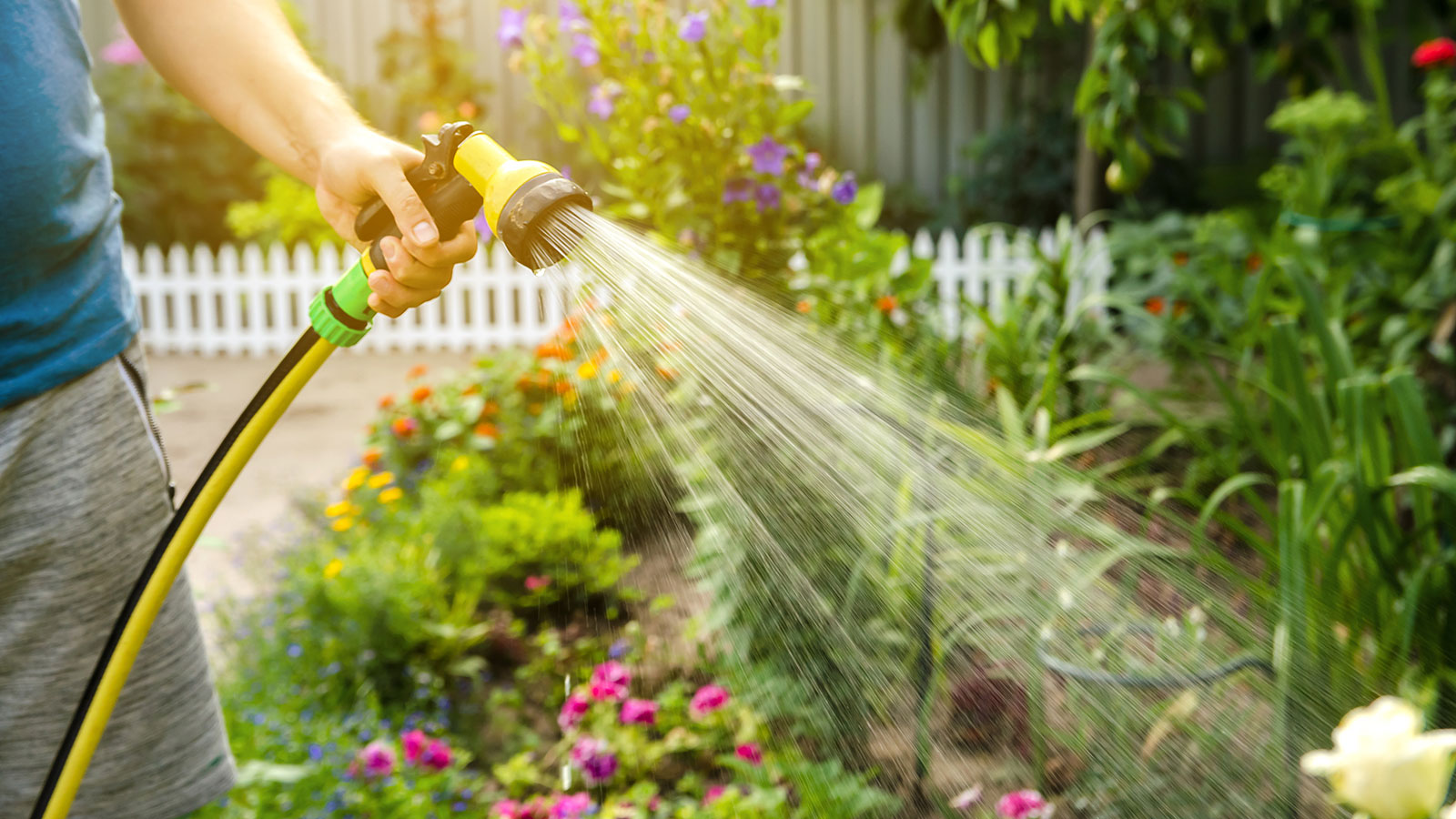
- 1. Water at the right time of day
- 2. Try deep and infrequent watering
- 3. Zone plants according to water needs
- 4. Make rainwater harvesting a must
- 5. Tackle leaking hose pipes and faucets
- 6. Improve your watering technique
- 7. Use smart irrigation systems
- 8. Harness the power of mulch
- 9. Landscape with water in mind
There has never been a more important time to nail down as many garden water-saving tips as you can. During times of drought and parched yards this will not only help your plants survive but will also reduce expensive water bills, as well as being the environmentally friendly way to garden.
Underwatering your yard during dry spells can lead to traumatized plants, while overwatering often means wasting a precious resource as well as an expensive water bill. It can be a tough call working out when to water plants in different areas of your yard, and how much water they actually need so that you can reduce water waste in your yard.
Our expert tips reveal how to assess each plant's watering needs, and include some innovative ideas you might not yet have thought of in terms of bringing your own watering technique up to date.
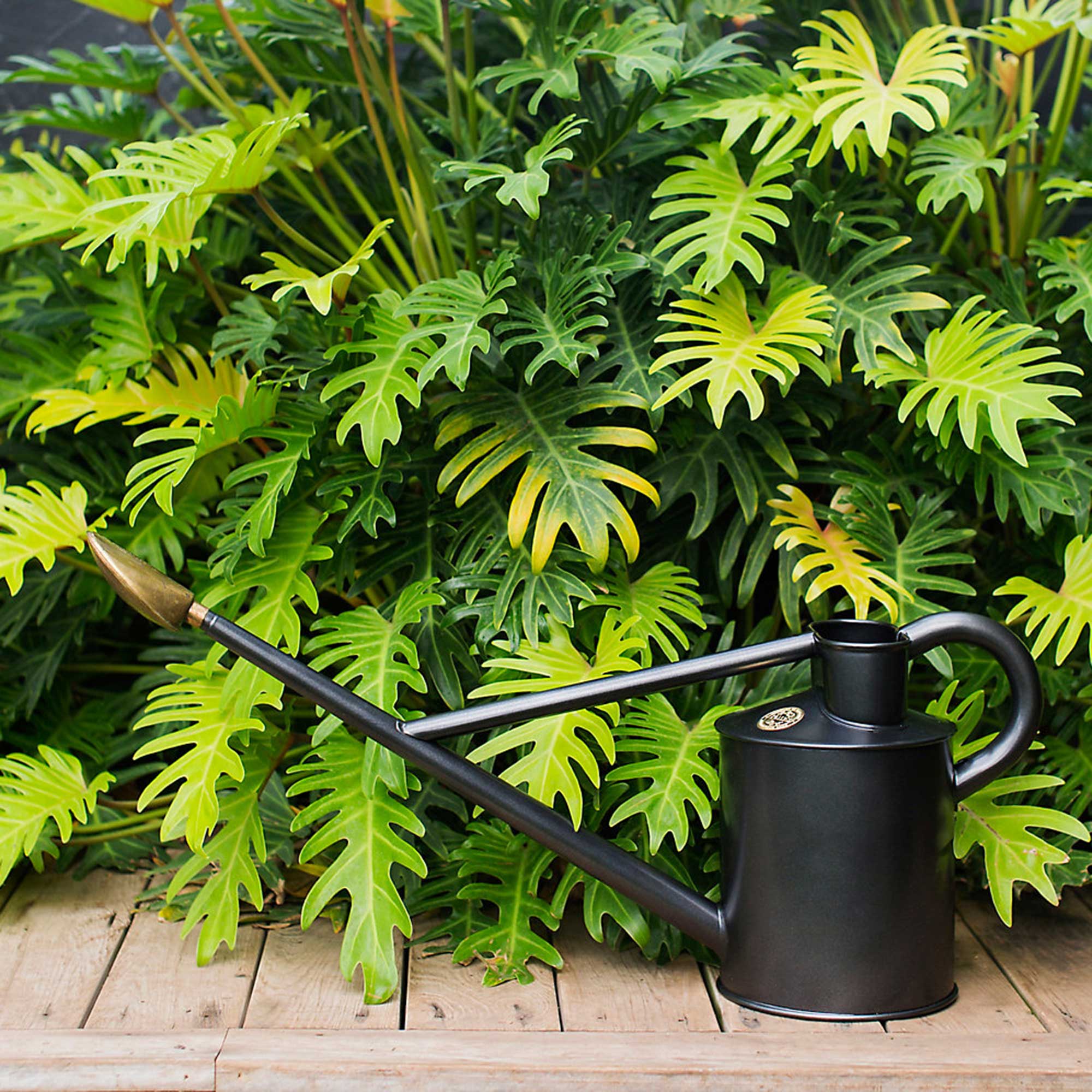
9 water-saving tips for your backyard
'Water is a precious resource, particularly in arid or semi-arid regions,' says Arizona-based horticulturalist Noelle Gordon, author of Dry Climate Gardening, available from Amazon. 'We celebrate when it rains and, conversely, are becoming more familiar with ever-increasing periods of drought. Yes, we can create vibrant gardens filled with beauty that will thrive, but we must consider the watering needs of plants and find ways to eliminate wasting water.'
Now find out what Noelle and the rest of our experts suggest for the best garden water-saving tips to make your yard more environmentally focused.
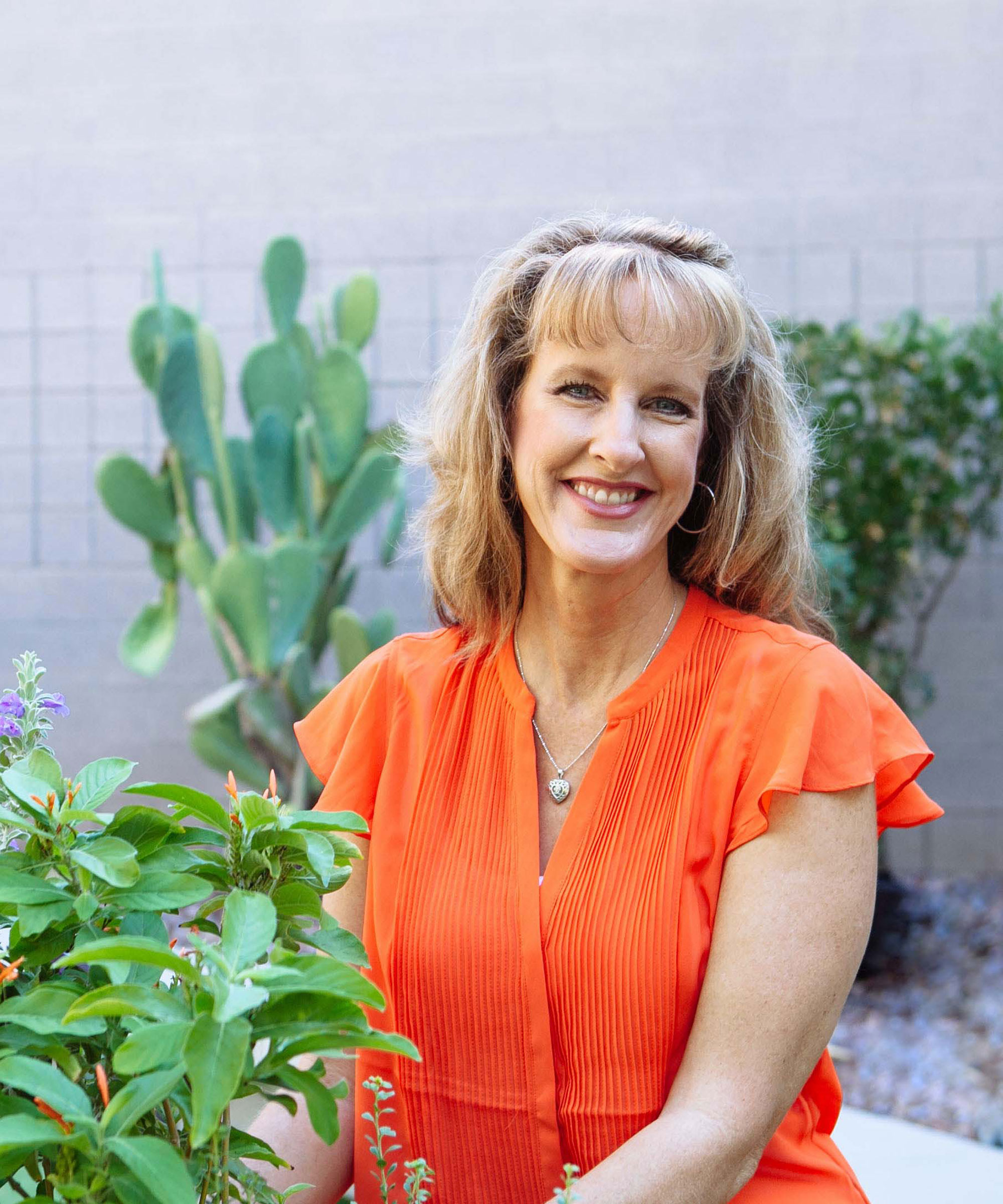
Noelle is a horticulturist, landscape consultant, and garden writer who lives in the Phoenix, Arizona, metro area. Popularly known as the 'AZ Plant Lady,' her passion for over 20 years has been to inspire and teach people to create, grow, and maintain beautiful gardens that thrive in a hot, dry climate.
1. Water at the right time of day
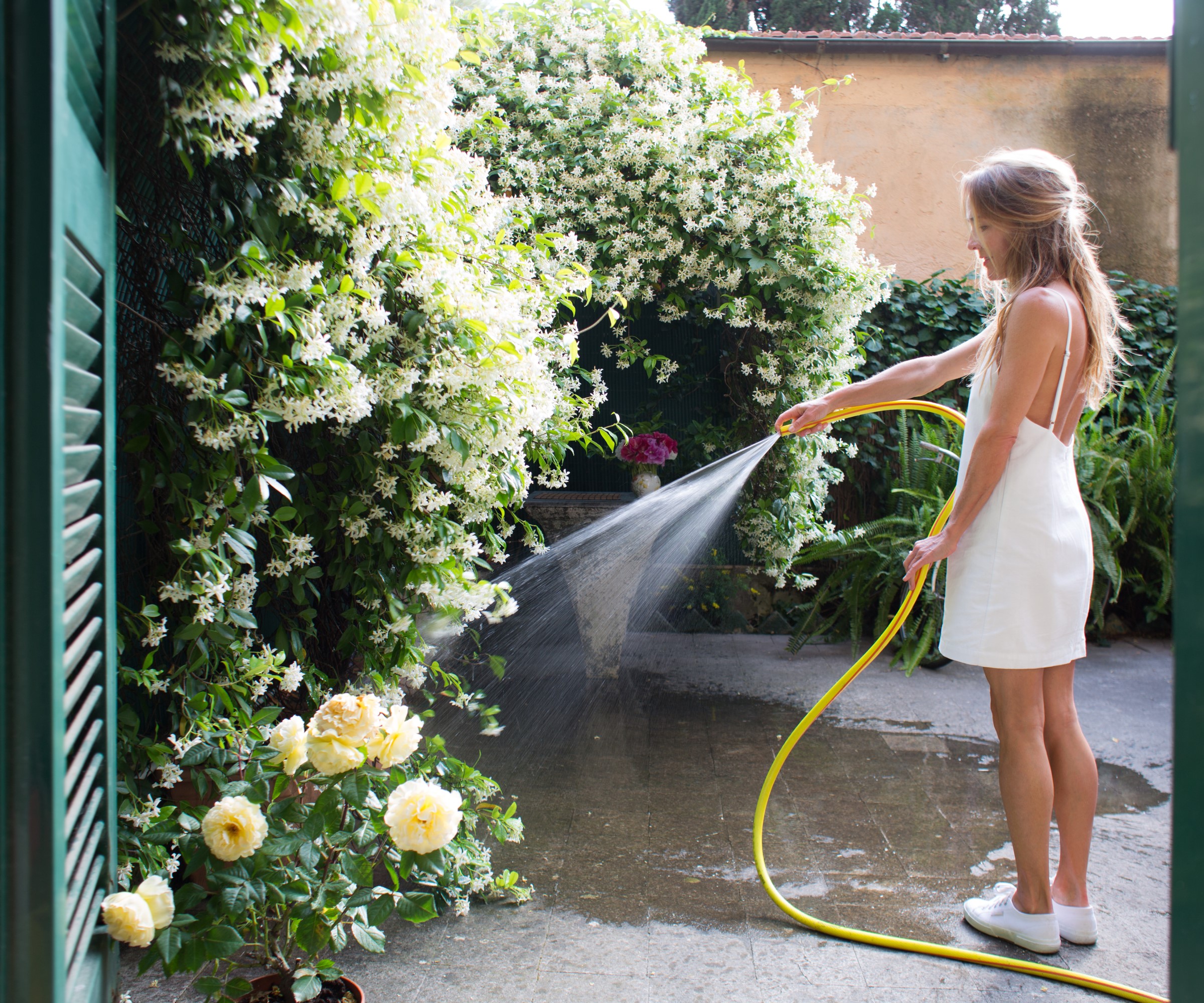
Morning watering is better than doing it in the evening
Watering plants at the optimum time of day is the first step towards conserving water in your yard. Experts agree that watering plants in the early morning hours before the sun rises is best, as it allows plants to take up water before the day’s heat arrives. 'Plants quickly absorb this early morning drink, so they are ready to face the day,' says Noelle Johnson.
When it comes to the dos and don'ts of watering plants in hot weather, avoid watering in the middle of a hot summer day, as plants have difficulty taking up the water and won’t use it efficiently. 'A common garden watering mistakes is using sprinklers to water a lawn or plants in the middle of the day, resulting in much water being lost to evaporation before it hits the ground,' explains Noelle.
Design expertise in your inbox – from inspiring decorating ideas and beautiful celebrity homes to practical gardening advice and shopping round-ups.
'We need to make the most of our water and reduce waste, so early morning watering is best. In general, watering at night or in the evening isn’t considered ideal as it can lead to the formation of fungal diseases in plants.'
It's also a good idea to find out when to water your lawn too, as watering your lawn at night can also lead to fungal problems if done on a regular basis.
2. Try deep and infrequent watering

Water deeply and you will have to do it less often
When we water plants, it's not enough just to shower the foliage and hope for the best. Whether you water plants from the top or bottom, the goal is to give plants the water they require to remain healthy while helping them to grow deep roots, so they can reach down into the cooler spaces in the soil. This means plants hold onto moisture longer, so less frequent watering is required.
'If you water plants too shallowly, the roots remain near the surface, where they are susceptible to hot summer temperatures, and the soil dries out much faster,' explains Noelle Johnson. 'In addition, arid soils have naturally occurring salts, and shallow watering allows the salts to concentrate around the root zone.'
Too much salt isn’t good for plants. Deep watering helps flush out naturally occurring salts and keep them away from the roots of your plants.
3. Zone plants according to water needs

Put all your drought-resistant plants in one section of the garden and you won't have to bother with a regular watering routine
If you can, group plants together that have similar watering needs. For example if you're interested in drought-tolerant landscaping ideas using plants that require less water, make sure they are all grouped together in the same area of the yard so you know that zone can largely be ignored when you're watering.
'If you want to save water in the garden, consider hydrozoning,' says Dan Bailey, president of WikiLawn Tampa Lawn Care, in Tampa, Florida. 'This means grouping together plants with similar water needs. By doing this, you ensure that each plant gets just the right amount of water it needs, nothing more, nothing less. It’s a simple but effective way to make your watering process more efficient and environmentally friendly.'
If it's not possible to order your plants in this way, either because they are already planted in a more random pattern or you have chosen a planting design that mixes them up, remember that smart irrigation systems can be set to water different parts of the yard according to the individual requirements of each type of plant.
This Orbit 6-Zone sprinkler controller from Amazon is compatible with Alexa, allowing you to control your garden watering system from wherever you are in the world. It's a great way to ensure you can still water plants while you're on vacation.
4. Make rainwater harvesting a must
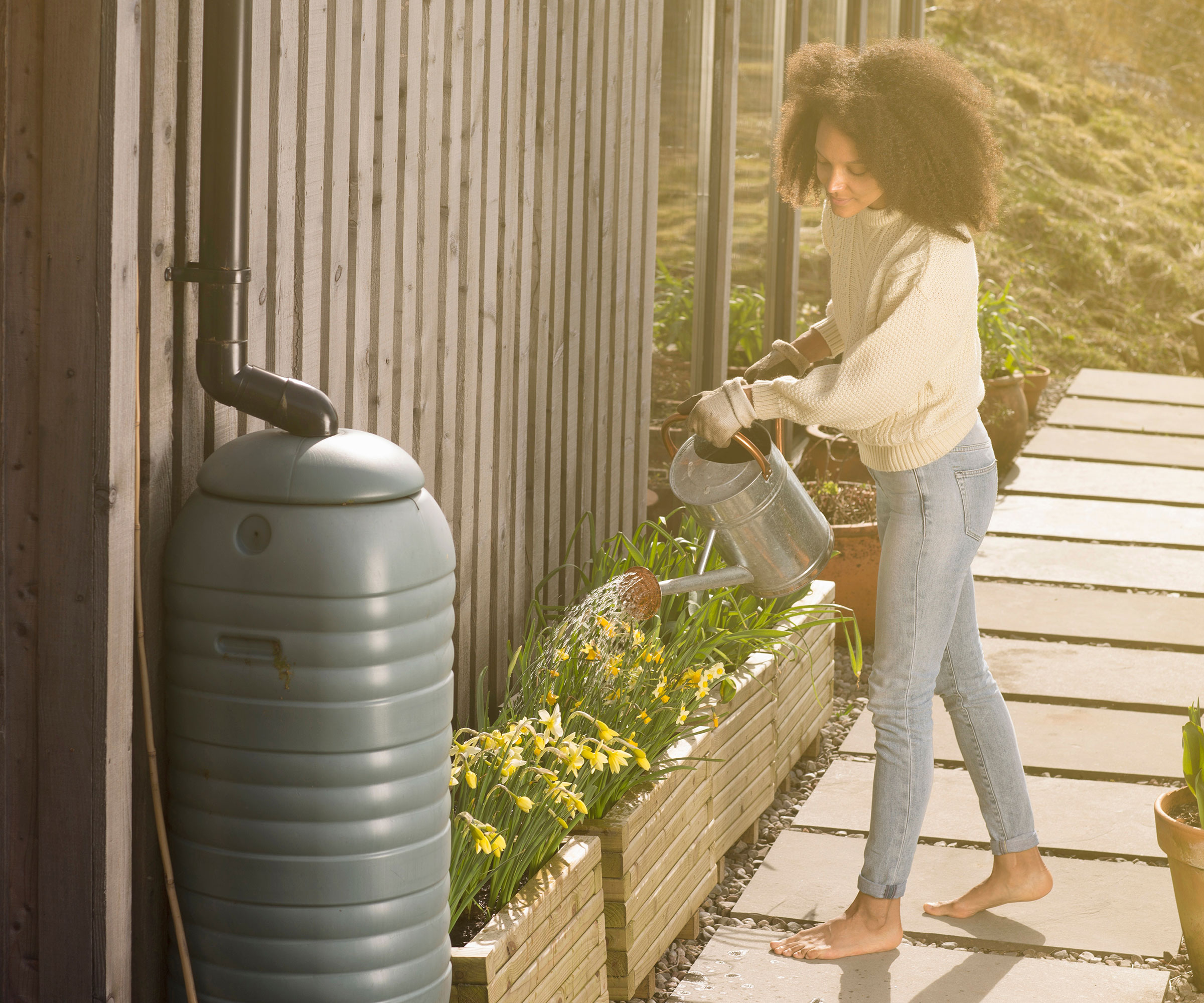
Every yard needs a rain barrel or two
The purest and best water comes from rain and, of course, it's free. So tap into this natural resource by finding out how to make a rain barrel to collect water. Then you can simply connect your hose to the bib at the bottom of the barrel and you have a ready supply of fresh water for all your plant needs. Alternatively, you can buy a ready-made design online and get collecting water fast. This Good Ideas 50 gallon rain barrel from Amazon has a wood-effect finish and comes in a range of different colors.
'Embrace sustainability by incorporating a rainwater harvesting system into your garden,' says Diana Cox. 'By installing rain barrels or a comprehensive rainwater collection system, you can harness the power of nature's bounty. Capturing and utilizing rainfall not only reduces your reliance on freshwater sources but also ensures a reliable supply of water for your plants.'
Don't forget, you can also use rain chains to help divert water to either your plants or your rain barrel too.
If you like the idea of watering plants with bath water, consider an automatic gray water irrigation system that diverts water straight from the bathroom (or your kitchen too) into the garden rather than down the drain. A diverter valve lets you decide which gray water goes into your garden to make sure it's free of chemicals.

Diana started her website The Gardening Talk as a way to help others who are new to the world of gardening and plant care. She has been growing plants since she was a little girl, and started to document her experience in gardening a few years ago.
5. Tackle leaking hose pipes and faucets
It might seem like an insignificant drip but leaky outside taps and hosepipes can result in substantial water wastage as the months go by. The hose bib is the small faucet on the exterior of your property that allows you to run water into the yard. If it's dripping this is usually due to a worn-out washer.
'Leaking hose bibs are an absolute must-address,' says Robert Jenkins, owner of Pinnacle Plumbing and Drains Inc, based in Eugene, Oregon. 'Every spring you need these replaced if you haven’t paid attention to them all winter because now they will probably be leaking badly, and this can add up to hundreds of dollars.'
Regularly inspect hoses and hose bibs for signs of leaks or damage, and promptly fix any garden hoses or issues to stop water waste. Always disconnect hoses and protect them from freezing before winter sets in, and make sure you know how to protect an outside faucet from freezing too.
6. Improve your watering technique

Avoid the foliage and focus on the soil and roots
Now we come to the combined problems of overwatering and, although it may seem conversely so as we're looking at garden water-saving tips, underwatering.
If your yard is experiencing drought conditions the temptation is to liberally douse every plant in sight. 'Overwatering is a common mistake for even the most experienced gardener when it's hot and your plants become stressed,' says Robert Summers, founder of underground irrigation system Root Quencher. 'The key is to penetrate below the soil to water the roots, which overall requires less water.'
You can also install an automatic rain shutoff device. 'Attach this simple gadget to the irrigation system controller to instruct it to turn off when a certain quantity of rain has fallen,' says Sam Kresch, director of marketing at Topsoil. 'It guards against unintentional overwatering. Including labour, installing an automatic rain shutoff often costs less than $200. It can conserve enough water in many areas of the nation to pay for itself within the first season.'
Not watering deeply enough is another issue. 'Surface watering is not beneficial to plants, as there is a 50% loss of water before it even hits the ground, much less soaks in to hopefully reach the roots of plants and trees,' adds Robert Summers. 'Find a watering device that goes below the surface to water the roots where you will need less water to have your plants thrive.'
7. Use smart irrigation systems
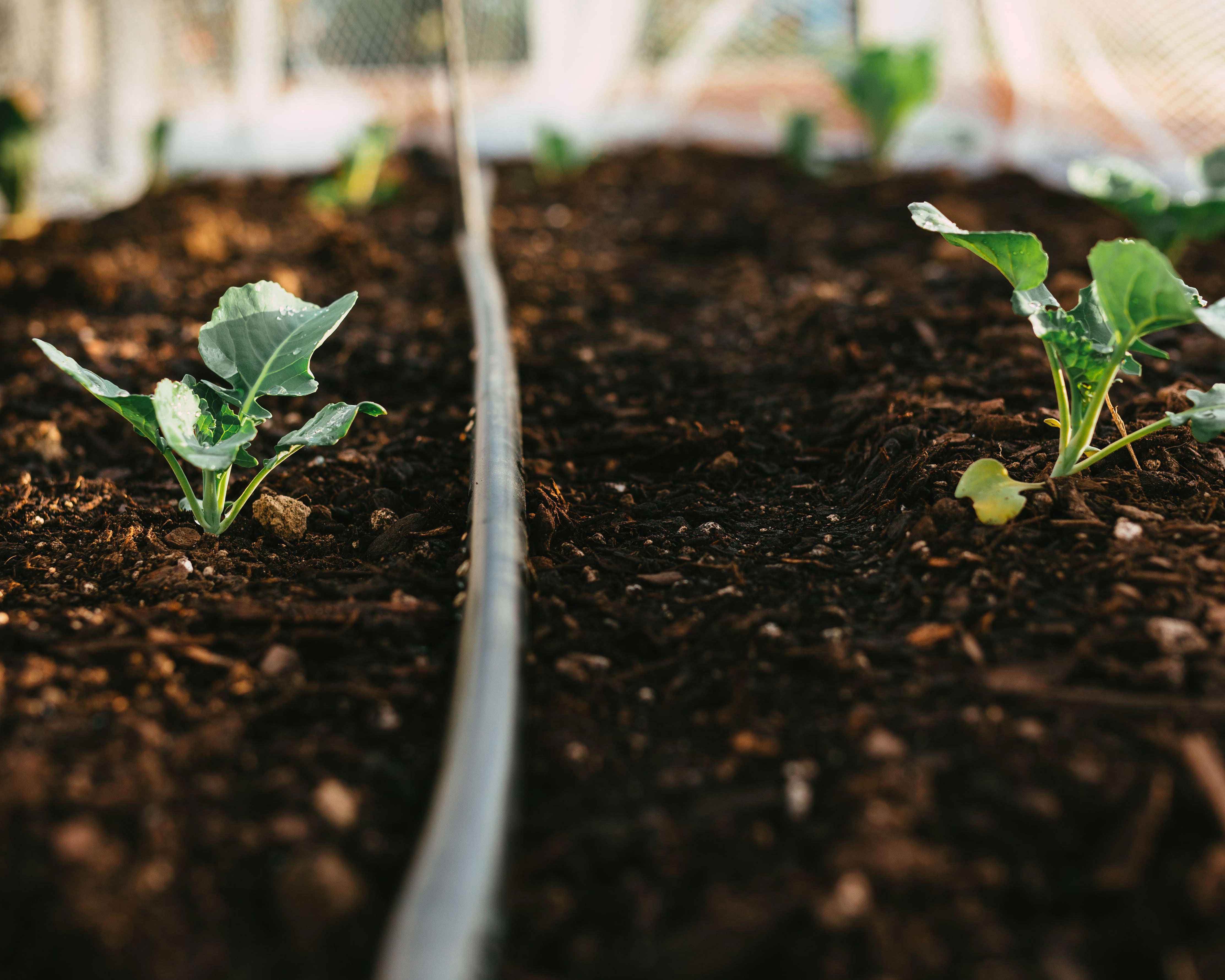
Drip irrigation is a great idea for vegetable gardens
Elevate your gardening game by embracing the latest tech. 'Install a cutting-edge smart irrigation system that constantly monitors soil moisture levels and automatically adjusts watering schedules accordingly,' suggests Diana Cox. 'This intelligent solution ensures that your plants receive the precise amount of water they require, eliminating water waste.'
Start small with a smart hose timer with WiFi hub like this Rachio one from Amazon, then upgrade according to your needs.
Alternatively try the DIY approach by creating your own DIY drip irrigation system. This works best for plants that don't need frequent irrigation. 'Take a clean 1-gallon plastic jug and poke five holes in the bottom with a nail,' suggest Noelle Johnson. 'Fill with water from the hose and place next to the plant you want to be watered. The water will slowly drip out, giving your plant the water it needs.'
You could also try using garden ollas, an ancient watering technique that uses specially designed terracotta pots planted in the soil to allow water to slowly seep out to the surrounding plants.
8. Harness the power of mulch

Layer up the mulch so soil retains moisture, meaning less need for watering
It's one of the least glamorous aspects of gardening but we can't tell you enough that you need to make mulching top priority. You will soon see multiple benefits, including better moisture retention in your garden soil.
'Unleash the transformative benefits of organic mulch in your garden,' says Diana Cox. 'Applying a generous layer of 2-3 inches of mulch helps create a protective barrier, significantly reducing evaporation and preventing soil moisture loss by an impressive 70%.' This means less watering.
Your plants benefit too. 'Do not ignore the health of your soil,' says Scott Gilmore, owner of Landscape Creations. 'I’ve seen a lot of people focusing on other techniques, but failing to improve soil health by adding organic matter and compost. A healthy soil has good water-holding capacity, enhancing its ability to hold onto moisture, thereby reducing the frequency and amount of watering that is needed.'
9. Landscape with water in mind

Factor water conservation ideas into your landscaping plans from the get-go
Water conservation is exceptionally important when it comes to gardening and backyard landscaping. If possible, it should be factored in at the design and planning stage.
'One of my top recommendations for anyone starting a landscaping or garden project is to design around water conservation,' says Anna Ohler, gardening expert and owner of plant nursery Bright Lane Gardens in Lake Ann, Michigan. 'This can include anything from choosing drought-tolerant planting, to choosing to plant in a lower area of your yard so water will run down to that region.'
This type of design will look different depending on your yard, but keeping water conservation at the center of your design plan will make a huge difference overall.
In addition to the garden water-saving tips we've outlined, it's important to bear in mind that you should also limit your use of sprinklers as they lead to overspray, so opt for a more efficient method instead. When watering or irrigating your yard check for runoff too and adjust your watering patterns accordingly to prevent wastage.
Conserving water in your garden is crucial for both the environment and your wallet. By following our simple yet effective tips you can significantly reduce how much water you use in your yard with no detrimental effects to your plants.
And if you live in a particularly hot and dry climate, it can be worth considering planning a dry garden, which will lessen your dependence on water going forward.

Lifestyle journalist Sarah Wilson writes about garden design and landscaping trends for Homes & Gardens. She has studied introductory garden and landscape design, and also has an RHS Level 2 qualification in the Principles of Plant Growth and Development. She is a regular contributor to Homes & Gardens and Livingetc. She has also written for Country Living, Country Homes & Interiors, and Modern Gardens magazines